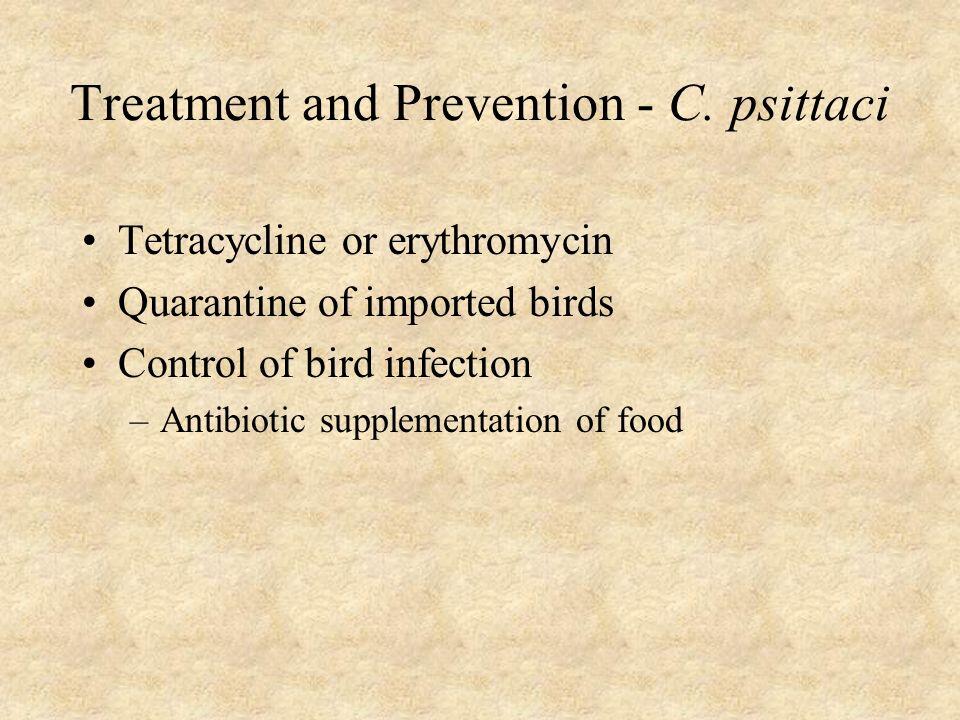Essentials of Diagnosis
- History of contact with birds.
- Positive C psittaci-specific microimmunofluorescence serologies.
- Positive complement fixation titers (not species specific).
Clinical Findings
Signs and Symptoms
Pneumonia, pericarditis, myocarditis, and endocarditis have been attributed to C psittaci infection (psittacosis or ornithosis) (Box 5). The incubation period for the pneumonia is usually 1-2 weeks. Its onset is gradual with body temperature increasing over a period of 5-7 days; however, there are cases in which the onset is sudden with rigors and temperatures as high as 104 °F.
Headache is a salient and important symptom; it can be severe and incapacitating. Cough is usually nonproductive and hacking; however, on occasion a mucoid sputum or hemoptysis may develop. Epistaxis, photophobia, myalgias, and back and neck muscle stiffness are also common accompanying symptoms. Pleurisy, friction rub, and pleural effusion are rare, as are mental status changes, which can eventually progress to coma. Other unusual manifestations include gastrointestinal symptoms, such as abdominal pain, nausea, vomiting, or diarrhea.
On physical exam, the pulse rate may be slow relative to the degree of fever (pulse-temperature dissociation). However, this relative bradycardia may be influenced by the physical conditioning and resting heart rate of the individual. Lung auscultation may be entirely normal even in patients who are severely ill or have extensive radiological changes. Splenomegaly has been described in = 70% of patients with C psittaci pneumonia. Abdominal distension, constipation, or pulmonary infarction can occur as late complications.
Laboratory Findings
The peripheral leukocyte count and erythrocyte sedimentation rate are usually normal or can be only slightly elevated.
Imaging
Chest radiographic changes are protean and nonspecific. Radiological abnormalities include infiltrates, which can be patchy, diffuse, lobar, atelectatic, wedge shaped, nodular, or miliary.
Diagnosis
The diagnosis of psittacosis can be confirmed by isolation of C psittaci or by serological tests. However, owing to its fastidious growth requirements and the associated hazards of its growth to laboratory personnel, most clinical laboratories do not attempt cultivation of this organism. Serological testing is best performed using acute and convalescent serum samples.
Treatment
Patients with C psittaci infection should be treated with a tetracycline (Box 6). Patients usually respond with amelioration of their symptoms within 24-48 h after institution of therapy. In patients allergic to or intolerant of tetracyclines, erythromycin can be used as an alternative.
The recommended treatment of psittacosis in children = 8 years of age is 500 mg of tetracycline every 6 h, orally, for 7-10 days. Erythromycin also can be used (50 mg/kg/d up to 2 g/d for 7-10 days). Tetracycline may be more effective than erythromycin.
Prevention
Imported birds should be quarantined and treated with a tetracycline for 30 days. An additional course of tetracycline for 15 days should be given by the importers or owners. Some birds will still shed the organism if treatment courses of < 45 days are used.




